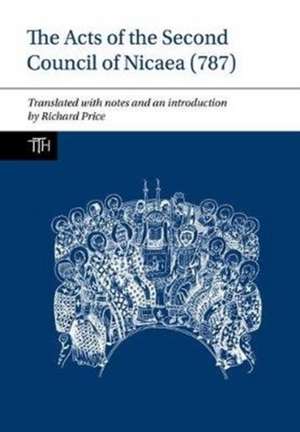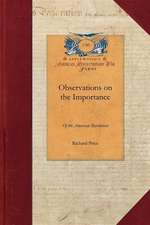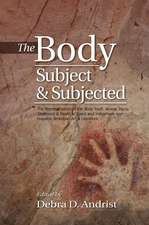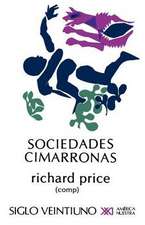The Acts of the Second Council of Nicaea (787)
Autor Richard Priceen Limba Engleză Hardback – 12 iul 2018
Counter-Reformation, in the defence of the role of art in religion. It is a text of prime importance for the iconoclast controversy of eighth-century Byzantium, one of the most explored and contested topics in Byzantine history. But it has also a more general significance - in the history of culture
and the history of art. This edition offers the first translation that is based on the new critical edition of this text in the Acta Conciliorum Oecumenicorum series, and the first full commentary of this work that has ever been written. It will be of interest to a wide range of readers from a
variety of disciplines.
| Toate formatele și edițiile | Preț | Express |
|---|---|---|
| Paperback (1) | 471.91 lei 6-8 săpt. | |
| Liverpool University Press – 17 mar 2020 | 471.91 lei 6-8 săpt. | |
| Hardback (1) | 1084.28 lei 6-8 săpt. | |
| Liverpool University Press – 12 iul 2018 | 1084.28 lei 6-8 săpt. |
Preț: 1084.28 lei
Preț vechi: 1485.32 lei
-27% Nou
Puncte Express: 1626
Preț estimativ în valută:
207.54€ • 225.51$ • 174.45£
207.54€ • 225.51$ • 174.45£
Carte tipărită la comandă
Livrare economică 21 aprilie-05 mai
Preluare comenzi: 021 569.72.76
Specificații
ISBN-13: 9781786941275
ISBN-10: 1786941279
Pagini: 688
Dimensiuni: 148 x 210 x 41 mm
Greutate: 1.41 kg
Editura: Liverpool University Press
ISBN-10: 1786941279
Pagini: 688
Dimensiuni: 148 x 210 x 41 mm
Greutate: 1.41 kg
Editura: Liverpool University Press
Notă biografică
Richard Price is Professor of the History of Christianity, Heythrop College, University of London. His many previous publications include The Acts of the Council of Chalcedon, The Acts of the Lateran Synod of 649 and The Acts of the Council of Constantinople of 553.
Descriere
The Second Council of Nicaea decreed that religious images are to be venerated, making the cult of icons central in Eastern Orthodoxy. Its Acts are essential reading for the iconoclast controversy, one of the most explored and contested topics in Byzantine history, and significant for the history of culture and the history of art.








